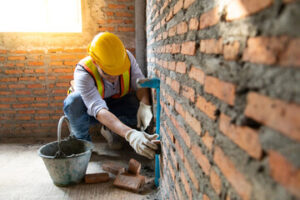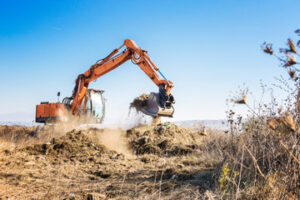Moving a piano requires specialized knowledge and training. You could get hurt trying to move one yourself and damage the instrument, your home or both.

Unlike household movers, professional piano movers have years of experience in their belts. They know how to navigate through the complexities of a move without damaging your precious musical instrument. Contact Mountain Piano Moving Company for professional help.
Professional piano movers have the training, experience and equipment necessary to transport a piano safely. This protects the instrument and your property, ensuring that your precious possession arrives at its destination in pristine condition. Professional movers also take safety precautions to ensure the health and wellbeing of their team members throughout the moving process. This is essential, as accidents can occur during moves if the proper steps aren’t taken.
The first step in piano moving is assessing the environment to identify any potential hazards or risks. This includes determining the type of piano, its location and how much it weighs. Professional movers also check the environment for any obstacles that might impede the move, such as narrow doorways or staircases.
Next, the movers will carefully wrap the piano to protect it from scratches or dents during transportation. They’ll then use the right lifting techniques and equipment to load the piano onto trucks or vans, preventing injury and damage. This includes using hydraulic lift gates to load the piano, rather than manual lifting.
Once the piano is loaded, movers will secure it with straps and other restraints to prevent shifting during transit. They’ll also use the right tools to help them maneuver the piano during transportation, like a ramp or special cradles for large or heavy instruments. They’ll also ensure that the truck is equipped with a padded interior to protect the piano from bumps and jostling.
When unloading the piano, movers will again follow proper lifting and loading techniques to avoid injury. They’ll also use padded tools to protect the instrument from scratches or marks, and they’ll ensure that the piano is properly positioned on the new surface. Once the piano is in place, movers will secure it with heavy-duty straps to prevent it from moving during unloading.
Before the movers arrive, you should make sure that your home is ready for the piano by putting away pets and relocating furniture. You should also remove any obstacles that could obstruct the movers’ path, such as overhanging branches or blockages. Finally, you should clear a pathway through the front of your home to ensure that the movers can easily navigate the piano.
Preparation
A piano is a heavy, delicate instrument that requires special handling to ensure it arrives at its new home in prime condition. Whether the piano holds sentimental value or is a financial investment, owners want to know it will reach its destination without any damage. Fortunately, professional piano movers use the right preparation procedures to ensure safe and successful relocations.
To begin with, they measure doorways, hallways, and staircases to ensure the piano will fit through without any issues on moving day. They also clear the path of furniture, obstacles, and debris that might interfere with a smooth journey.
Next, they use specialized tools like padded piano dollies and straps to secure the instrument. These tools minimize the risk of external damage, including scratches and dents, while also promoting proper weight distribution when lifting. In addition, they ensure the piano is free of any loose or dangerous components like keys or pedals. Finally, they close and lock the keyboard lid to prevent accidental openings during transit.
When they arrive at the piano’s new location, piano movers carefully unload and transport it into the building. They follow a similar procedure to the loading process and inspect the piano for any signs of damage or improper handling. If they notice any problems, they will work with the owner to repair or replace the piano as needed.
Piano movers will also remove any items from the top of the piano, such as picture frames and vases. This reduces the risk of them getting damaged or breaking during transportation and simplifies the reassembly process. Additionally, they will secure any removable parts, such as the legs and pedal lyre, to prevent them from accidentally opening during transit.
Before leaving the property, piano movers will make sure all the equipment they need is on hand. This includes padded piano blankets, dollies, and straps, as well as tools for disassembly and reassembly if necessary. They will also keep lines of communication open with the piano owner to inform them of any logistical difficulties they might encounter during the move.
Efficiency
Pianos are large and heavy, making them difficult to maneuver in tight spaces. Professional piano movers know how to move these instruments quickly and efficiently. They have specialized tools to help them lift and transport the piano without straining or damaging it. These tools include piano dollies, which can be used to roll the piano across flat surfaces, and straps that are designed to secure the instrument. In addition, movers use protective wrapping and padding to prevent damage during the move.
Piano movers also have the experience to assess the environment and plan for potential obstacles before the move begins. They will determine which equipment to bring with them and how many movers are needed for the job, as well as establish a timeline for the move. This helps to ensure that the piano is moved in a timely manner and avoids any unexpected delays.
Whether moving a grand or upright piano, efficiency is important to piano movers. They want to make the process as quick and easy as possible for their clients, while still providing the necessary care and attention to the instrument. This means avoiding unnecessary complications and delays, which can result in increased costs. Piano movers balance speed with precision, which is how they achieve their high levels of efficiency.
One of the primary factors that influence the cost of piano moving services is the distance between the current and new locations. If the piano needs to be transported over a long distance, it may require additional planning and more resources than a local move. Additionally, access challenges in the new location can increase the cost of the move. These challenges can include navigating narrow doorways or staircases, and they can also involve hoisting the piano over a balcony or through a window.
To reduce the risk of these complications, it’s recommended to enlist the help of friends and family members to assist in the moving process. Ideally, you should have at least four people to move the piano. It’s also a good idea to have a couple of extra people available in case the movers need help with an unexpected obstacle or if one person becomes injured. It’s also a good idea for people to wear comfortable, sturdy shoes and take frequent breaks during the move.
Value
When a homeowner decides to move his or her piano, it’s important to have professional movers handle the transport. The instrument is large, heavy and can be very dangerous to move on your own. Moreover, it’s often difficult to maneuver a piano through doorways, up stairs and into elevators. If homeowners attempt to do this on their own, they may cause damage to walls, floors and other items in the home. This can cost them hundreds or even thousands of dollars in repair bills.
The value that a piano adds to a household is tremendous. The instrument can bring joy, connection and fun to family members of all ages. It is also a great way for children to learn an artistic hobby that can be enjoyed for life. When a piano is moved, it can be relocated to a different room in the house or even to another residence entirely. Professional movers have the equipment required to transport the piano safely, regardless of location.
Moving an upright or grand piano is a big job. These instruments are extremely heavy and can be damaged easily if not handled properly. Professional movers are trained to move these delicate instruments and have the necessary tools to do so efficiently. They can protect the instrument from damage during transit by using specialized tools such as padded dollies and furniture straps. They can also use custom crates to keep the piano safe from environmental factors such as moisture and heat.
Besides being highly trained, piano movers are also insured and licensed. This gives homeowners peace of mind that their valuable investment is in good hands. Furthermore, it’s a good idea to choose a company that is familiar with Seattle’s weather and layout, as this will help avoid any unexpected surprises on moving day.
Professional piano movers can make the transition to a new home a smooth and enjoyable experience for the entire family. They can help safeguard the investment that a person has made in his or her musical talents, while simultaneously protecting their family’s home from potential damages caused by amateur movers.



